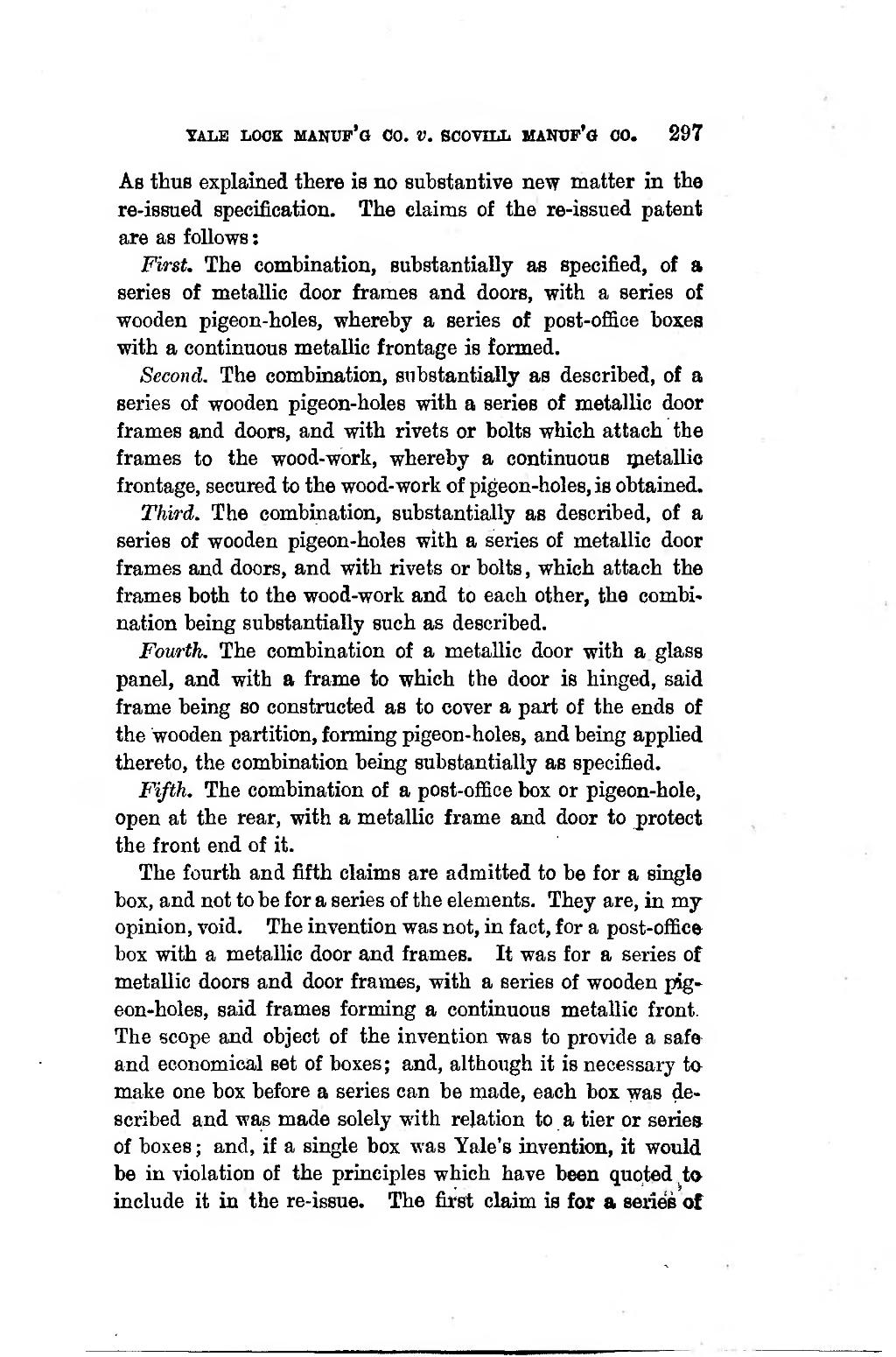As thus explained there is no substantive new matter in the re-issued specification. The claims of the re-issued patent are as follows :
First. The combination, substantially as specified, of a series of metallic door frames and doors, with a series of wooden pigeon-boles, whereby a series of post-office boxes with a continuous metallic frontage is formed.
Second. The combination, substantially as described, of a series of wooden pigeon-holes with a series of metallic door frames and doors, and with rivets or bolts which attach the frames to the wood-work, whereby a continuons metallic frontage, secured to the wood-work of pigeon-holes, is obtained.
Third. The combination, substantially as described, of a series of wooden pigeon-holes with a series of metallic door frames and doors, and with rivets or bolts , which attach the frames both to the wood-work and to each other, the combination being substantially such as described.
Fourth. The combination of a metallic door with a glass panel, and with a frame to which the door is hinged, said frame being so constructed as to cover a part of the ends of the wooden partition, forming pigeon-holes, and being applied thereto, the combination being substantially as specified.
Fifth. The combination of a post-office box or pigeon-hole, open at the rear, with a metallic frame and door to protect the front end of it.
The fourth and fifth claims are admitted to be for a single box, and not to be for a series of the elements. They are, in my opinion, void. The invention was not, in fact, for a post-office box with a metallic door and frames. It was for a series of metallic doors and door frames, with a series of wooden pigeon-holes, said frames forming a continuons metallic front. The scope and object of the invention was to provide a safe and economical set of boxes; and, although it is necessary to make one box before a series can be made, each box was described and was made solely with relation to a tier or series of boxes; and, if a single box was Yale's invention, it would be in violation of the principles which have been quoted to include it in the re-issue. The first claim is for a series of
